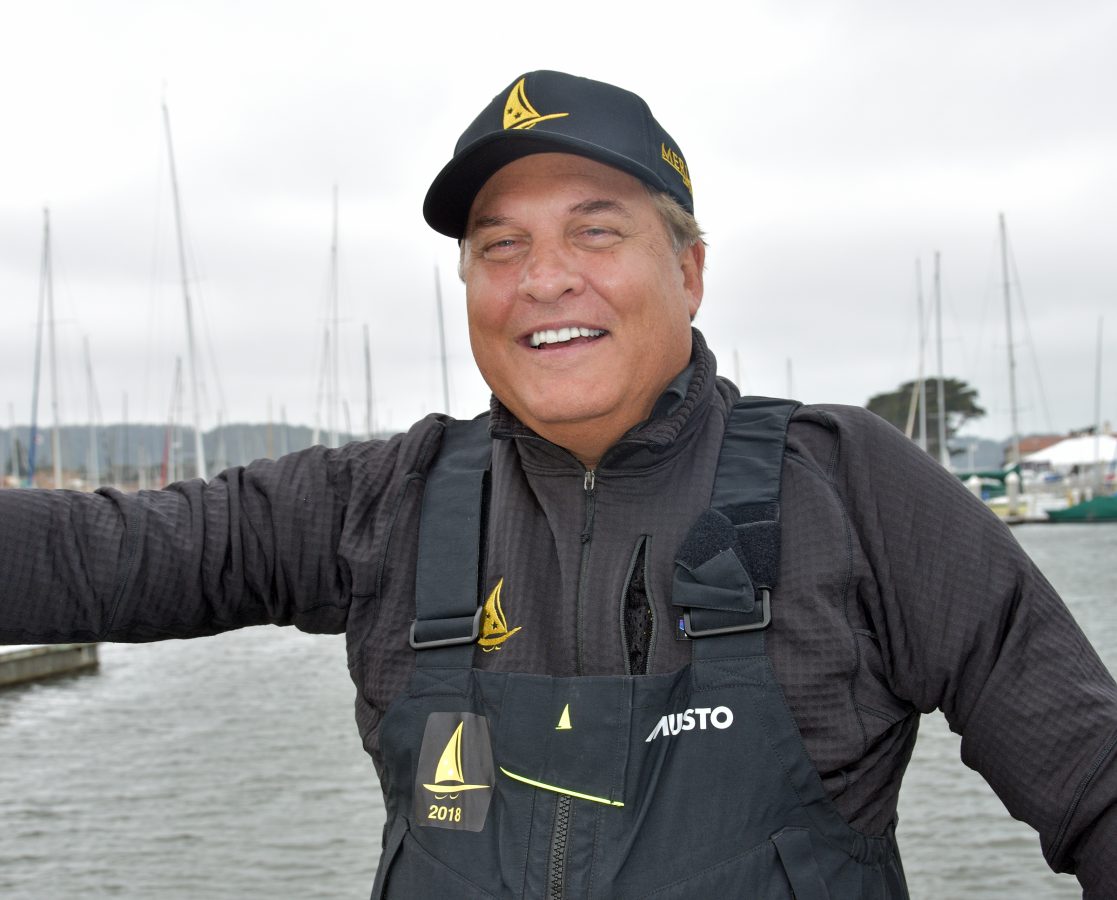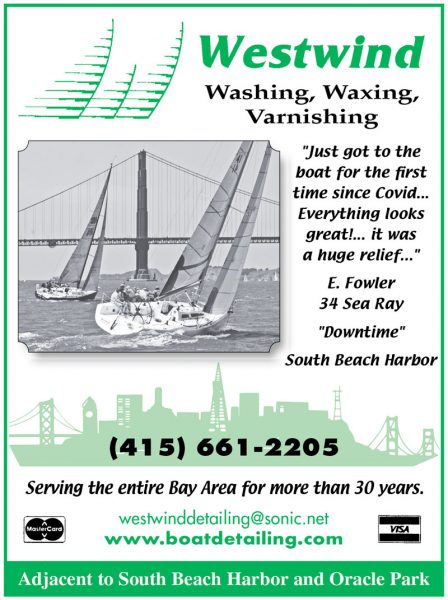
Webb Chiles Reflects on His 80th Birthday
The age of miracles has not passed. I am 80 years old today. Few, if any, including me, expected I would reach such an age. “Almost dying is a hard way to make a living,” I once wrote, and I have almost died more times than I can easily recall. It goes with the territory of pushing beyond the edge of human experience. Either I was very good or I was very lucky. Perhaps both.
I now mostly live in a condo on South Carolina’s Hilton Head Island overlooking Skull Creek, which is part of the Intracoastal Waterway. Gannet is docked 500 feet away. I can see her mast from our windows and deck.
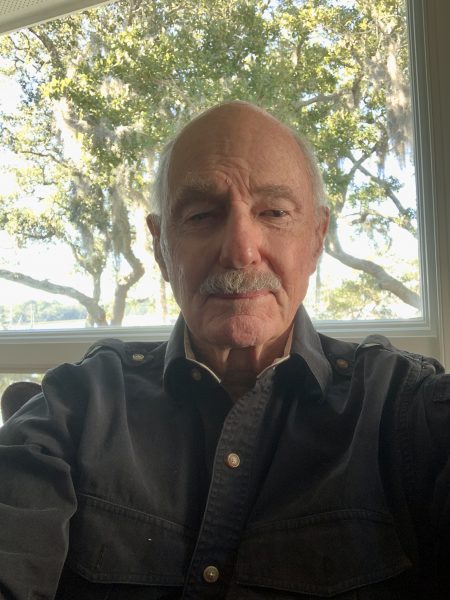
Hilton Head Island has a wonderful climate from October to May, but is too hot in the summer, with heat indexes routinely of 105ºF. So I am considering sailing somewhere cooler next summer. Iceland sounds cool.
Carol and I will spend the day quietly. I’ll go down and sit on Gannet for a while and consider what I’ve done with my life and what I might still do. This evening we will go out to dinner and when we return I will pour some of my favorite liquid, Laphroaig 10-year-old single-malt Scotch, and raise my glass to you and to me and to our dreams and to the passion to fulfill them.
Wishing you well from the other coast.
Read about Webb Chiles’ singlehanded circumnavigation aboard the Moore 24 Gannet. Click here for part 1, and here for part 2.
*Webb Chiles’ actual birthday is November 11, but as we won’t be publishing tomorrow, we’ve shared his letter in advance.
Get Your Good Jibes with Chip Merlin and His Perfect Match
Welcome back to Latitude 38’s sailing podcast, Good Jibes. This week’s host, Chris Weaver, is joined by Merlin owner Chip Merlin right after the first two races of the Rolex Big Boat Series at the St. Francis Yacht Club. Merlin was created in 1977 by Bill Lee of Santa Cruz and has revolutionized yacht racing on the West Coast.
Hear how Chip became the proud owner of Merlin, the changes he’s made since buying her, his impressions of the Rolex Big Boat Series, just how fast the boat is, and his new book Mavericks & Merlins. This episode covers everything from finding your perfect boat to trying out a new race.
Here’s a small sample of what you will hear in this episode:
- What were Chip’s impressions of the race?
- How was the second race in the wind?
- What year did Chip do the Newport to Bermuda race?
- How did his crew come together?
- Why did he miss the Transpac this year?
- How did his dream of owning Merlin come true?
- Does he have a plan for the next regatta?
- How did he first start sailing?
Read about Merlin in this year’s Rolex Big Boat Series, then check out the episode and show notes for more detail.
You can listen to this and previous episodes on Apple Podcasts, Spotify, Google Podcasts, and your other favorite podcast spots — follow and leave a 5-star review if you’re feeling the Good Jibes!
Good Jibes is brought to you by the Safe Boating Campaign, in partnership with the National Safe Boating Council and US Coast Guard. Learn more at SafeBoatingCampaign.com.
Westwind Boat Detailing Offers Washing, Waxing and Varnishing
Sailors’ Word of the Day: Latitudinarian
Sailor Dave Demarest thought we ought to know about his ‘word of the day’ and sent it our way. The word is ‘latitudinarian’ and is pronounced “lat·i·tu·di·NER·i·an”.
According to the Merriam-Webster online dictionary, latitudinarian means: not insisting on strict conformity to a particular doctrine or standard; tolerant; specifically — tolerant of variations in religious opinion or doctrine.
Here’s the thing … based on that description, it could be said that sailors are latitudinarian inasmuch as sailors are a very tolerant species, particularly when it comes to the multitudinal variations in sailboat sizes, designs, preferred sailing styles, sailing locations, whether to sail as part of a group or alone … The list of variations that exist in the sailing world is almost endless, and sailors clearly do not insist on strict conformity to a particular doctrine or standard — except when it comes to one-design racing. One-design racing is just that, and therefore the scope for nonconformity is zero. Oh, and there are some sailors who might feel less tolerant of a boat that doesn’t actually use the wind to propel it across the water, say, a power boat for example. But overall sailors are a pretty relaxed, tolerant and flexible bunch, and therefore in our minds, latitudinarian.
That said, we don’t want anyone to think we only looked at one source for our understanding of ‘latitudinarian.’ According to Wikipedia, latitudinarians were “initially a group of 17th-century English theologians — clerics and academics — from the University of Cambridge.” And without going into an in-depth discussion on the word and its meaning, most sources we viewed on the internet associate the word with religious doctrines. So if you were to take this explanation of latitudinarian as ‘gospel’ you might say we’re twisting its interpretation to suit our own purposes. But even then we would argue back that, for many sailors, the act of sailing is tantamount to a religious experience. Therefore, again, we suggest that sailors, by nature, are latitudinarian. Also therefore, we think we have the most apt name for our magazine, Latitude 38. For not only does it describe the attitudes of sailors, but it also describes our region of operations — the 38th latitude, which, in the physical sense, makes us all latitudinarians.
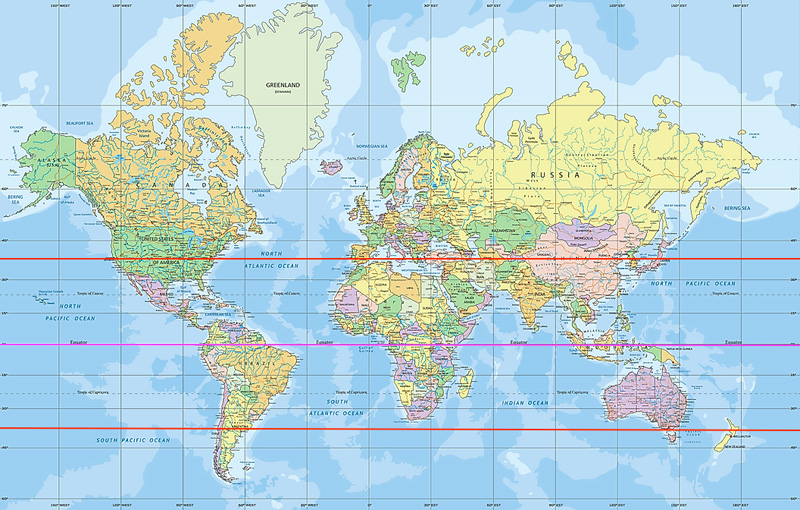
It’s interesting to note that latitude 38 runs right through another sailing mecca, Annapolis, Maryland, and then over to the proximities of Lisbon in Portugal, Alicante in Spain, the Balearic Islands, Sicily, Greece, Turkey, Korea and Japan. In the Southern Hemisphere it passes through Melbourne, Australia, and pretty close to Auckland, NZ, and South Africa. All are great sailing locations.
Seeing the map is also a reminder just how much of the world’s landmass is north of the equator and how much water is to the south of it. So now that you know about latitudinarians, you can go forth and explore the latitudes north and south with a true sense of your origins.
Update on the Transat Jacques Vabre Transatlantic Race
The 15th edition of the famed Transat Jacques Vabre (TJV) got underway from Le Havre, France, on Sunday, November 7. A doublehanded transatlantic race from France to the Caribbean island of Martinique, the race is open to four different classes of boats including Class 40 monohulls, Ocean Fifty trimarans, IMOCA 60 monohulls and the revered ‘Ultime’ class of unlimited maxi-trimarans. Getting underway in blustery conditions on Sunday, the big fleet of 79 yachts put up big speeds from the start — perfect for some intense action shots taken by the global yachting press — before sailing into a windless ridge of pressure that stopped the fleet dead in its tracks.
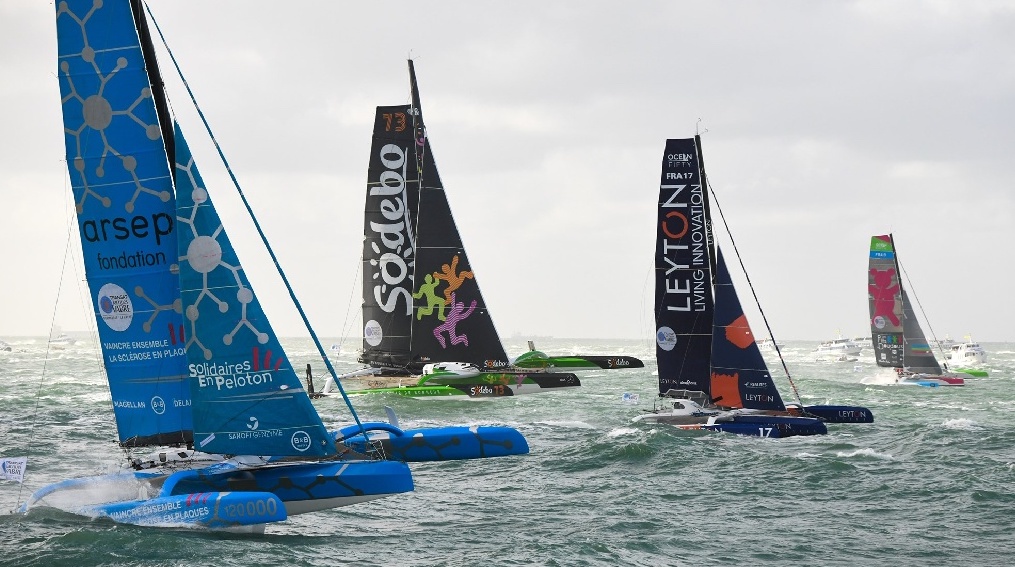
Over three days into the race as of this writing the fleet is now very spread out with the fastest trimarans rumbling south in a moderate northerly flow in the Portuguese trades, while the slower monohulls are sailing in the Bay of Biscay in relatively light air. A couple of IMOCA 60s have dismasted, including Louis Burton’s new Bureau Vallée 3 (formerly L’Occitane) and the American team 11th Hour Racing’s ‘B’ boat Alaka’i (formerly Hugo Boss). All of the sailors onboard are fine, though this is a blow to these two teams that had put in a lot of training miles without incident over the past year.
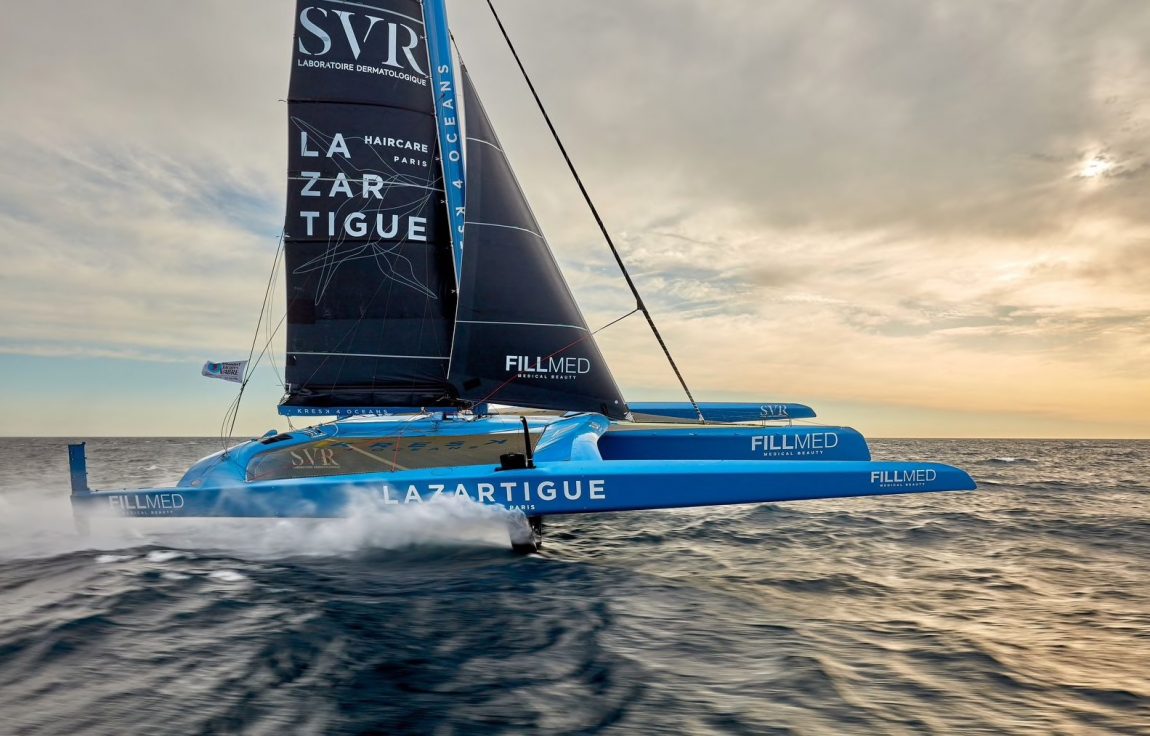
At the head of the fleet overall, Franck Cammas and Charles Caudrelier onboard Maxi Edmond de Rothschild continue their dominance over the five-boat Ultime fleet, while François Gabart’s new boat SVR Lazartigue and Armel le Cleac’h’s new boat Banque Populaire XI both get up to speed. The newly formed but very formidable duo of Erwan le Roux and Xavier Macaire onboard Koesio are currently leading the seven-boat Ocean Fifty trimaran class. At the head of the 21-strong IMOCA fleet is APIVIA, sailed by Charlie Dalin and Paul Meilhat, which has certainly proven to be the boat to beat in the last year and a half since the Vendée Globe. The race’s largest division is the Class 40 monohulls with 45 boats entered. Leading the Class 40s at this stage are the duo of Nicolas Jossier and Alexis Loison onboard La Manche #evidencenautique.

While the race is a very French affair, there are a handful of Americans, and even one Bay Area sailor! Currently sailing in fifth place in the IMOCA division is 11th Hour Racing’s ‘A’ boat Malama, which is skippered by Newport, Rhode Island, native Charlie Enright and co-skippered by Frenchman Pascal Bidegorry. In the Class 40 division, the Akilaria RC3 design named Polka Dot is skippered by Bay Area sailor Alex Mehran Jr. — a Singlehanded Transpacific Yacht Race veteran — and is co-skippered by renowned naval architect and sailor Merfyn Owen of the famed Owen Clarke yacht design. Polka Dot has taken a pretty major flyer and has deviated their route from the rest of the fleet more than any other boat in the race. Surely motivated by finding more breeze than their rivals, the duo is sailing toward an incoming low-pressure system that will hit them with headwinds, but once they tack they could come out of the low with speed and rejoin the fleet. It’s a high-risk, high-reward move, and while it seems far-fetched for it to pay off, it will surely be interesting to watch!
To follow the race, go to TransatJacquesVabre.org/en/.
You can read about previous Transat Jacques Vabre racing here.

